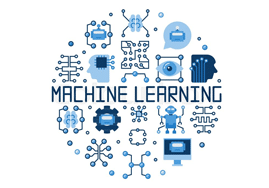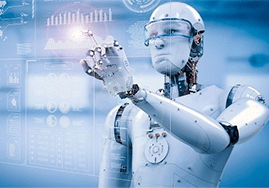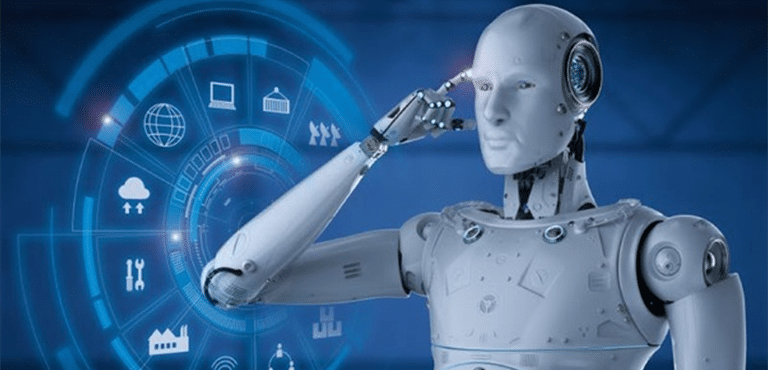A Brief History of Automation Technology
Much like human evolution, we can look back at modern technology and see a lineage of predecessors, “prehistoric” machines, software, servers and concepts that helped shape today’s tech landscape. Some might argue we can even trace the philosophical ideas of artificial intelligence back to the ancient Greeks, pointing to the construct of information processing and knowledge bases from those like Aristotle.
But when looking at technology itself, we most often consider the birth of modern AI and automation as being millenia later, around the mid-twentieth-century, with the advent of the first digital computer.
1950s to 1960s: Early Machine Learning

In 1952, IBM scientist Arthur Samuel created a computer program that could play a game of checkers on IBM’s first fully digital computer. The program was self-learning, and eventually became the first demonstrable example of modern machine learning, a term Samuel himself would coin in 1959, and a concept would go on to be the bedrock of modern AI.
In 1957, Frank Rosenblatt built the first neural network, capable of more complex problem solving. Then in the 1960s, pattern recognition helped propel the idea of algorithms into the mainstream, and programs like ELIZA were showing early promise in the field of natural language processing (NLP).
Over the next 30 years, computers gain memory, capacity, intelligence and processing power, thanks to these fundamental technologies. By the 1990s, computers were affordable enough to be ubiquitous across homes and businesses around the globe.
The 1990s to Early 2000s: The Rise of Automation
We can look back at these segments in history and see how these kinds of technologies rose to prevalence, and how their shortcomings led to more innovation.

Long before modern robotic process automation (RPA), we had screen scraping, which helped to connect incompatible systems and sometimes works as a data extraction tool. However, this technology is reliant on site HTML and can have variations that are quite complicated to navigate. For this reason, while useful, it’s not exactly user-friendly.
To overcome this hang-up, technologists in the 1990s set their sights on new support for the business community with workflow automation tools. This helped improve business processes by replacing paper-based work with electronic processing, improving speed and efficiency of tasks, although humans were largely still part of most aspects of the workflow.
From here, technology progressed further, bringing rudimentary tools for RPA and AI into the mix throughout the late 1990s and early 2000s, with modeling graphical tools for as-is and to-be processes. The tools were capable of using rules-based formats to complete and execute specific tasks in the workflow.
2005 and Beyond: Modern Solutions for RPA and AI
By 2005, business process management began to take shape as a discipline, evolving from predecessors like enterprise resource planning and management information systems.
Meanwhile, on the heels of Big Data, process mining technology also emerged on the scene, providing powerful discovery tools focused on analysis of business processes.
RPA, all the while, is evolving from fundamental modeling tools to connect with AI technology that allows businesses to streamline work across multiple applications.

And right about here is where we can see the beginnings of the siloed approach.
- Some businesses see the value in business process management evolving as a discipline.
- Others look at process mining as the best way to improve and address discovery with Big Data.
- Others still are focused on RPA and AI, convinced these are the tools that will usher in the next era.
While each of these technologies evolved to be much more sophisticated solutions than their predecessors, and some businesses have even invested in them all, there are still challenges.
IT teams are forced into complicated tech stacks that aren’t designed to integrate with each other. Businesses end up paying for more capacity they need, just to accommodate brief spikes during short periods of peak capacity. And both marketing teams and IT teams are often learning these new systems as they go, creating headaches, roadblocks and friction.
EZFlow: A Solution for Modern Businesses
Designed specifically for integration of multiple technologies —including those built into the platform and full compatibility with other RPA technologies —and for multiple business users, EZFlow works like a user friendly SaaS product with cloud technology.
With an open, cloud-based system, it provides the power of a comprehensive tech stack with simplified, real-time access and easy integrations. It features tools for process intelligence, visual workflow management and value chain mapping, plus it fully integrates with other technologies, making it the only platform you need for intelligent automation and business process management.
Getting Start with Automation
Want to learn more about the EZFlow intelligent automation platform? Schedule a free demo to see what the platform can do for you and your business.

